Michal Mackiewicz
Improving Object Detection for Time-Lapse Imagery Using Temporal Features in Wildlife Monitoring
Dec 20, 2024Abstract:Monitoring animal populations is crucial for assessing the health of ecosystems. Traditional methods, which require extensive fieldwork, are increasingly being supplemented by time-lapse camera-trap imagery combined with an automatic analysis of the image data. The latter usually involves some object detector aimed at detecting relevant targets (commonly animals) in each image, followed by some postprocessing to gather activity and population data. In this paper, we show that the performance of an object detector in a single frame of a time-lapse sequence can be improved by including spatio-temporal features from the prior frames. We propose a method that leverages temporal information by integrating two additional spatial feature channels which capture stationary and non-stationary elements of the scene and consequently improve scene understanding and reduce the number of stationary false positives. The proposed technique achieves a significant improvement of 24\% in mean average precision (mAP@0.05:0.95) over the baseline (temporal feature-free, single frame) object detector on a large dataset of breeding tropical seabirds. We envisage our method will be widely applicable to other wildlife monitoring applications that use time-lapse imaging.
* 18 pages, 13 figures
Computer Vision Pipeline for Automated Antarctic Krill Analysis
Sep 12, 2023Abstract:British Antarctic Survey (BAS) researchers launch annual expeditions to the Antarctic in order to estimate Antarctic Krill biomass and assess the change from previous years. These comparisons provide insight into the effects of the current environment on this key component of the marine food chain. In this work we have developed tools for automating the data collection and analysis process, using web-based image annotation tools and deep learning image classification and regression models. We achieve highly accurate krill instance segmentation results with an average 77.28% AP score, as well as separate maturity stage and length estimation of krill specimens with 62.99% accuracy and a 1.96 mm length error respectively.
Extending Temporal Data Augmentation for Video Action Recognition
Nov 09, 2022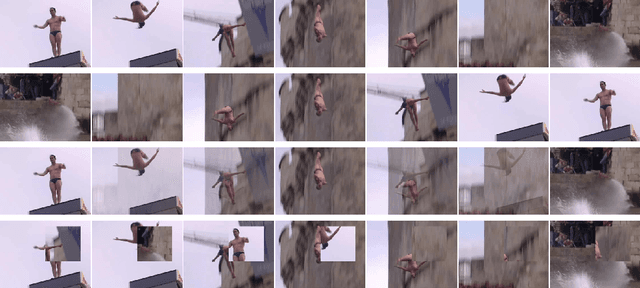
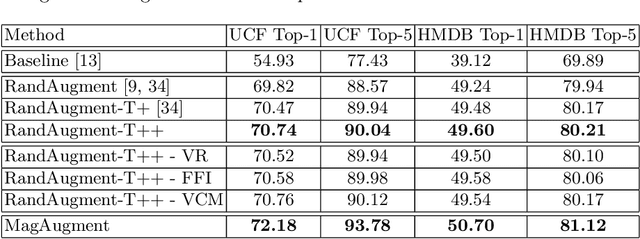

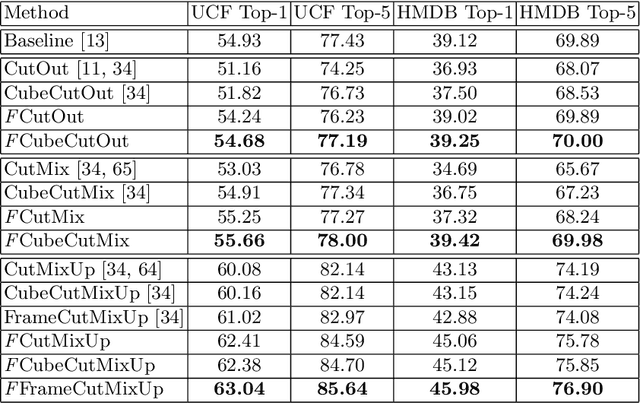
Abstract:Pixel space augmentation has grown in popularity in many Deep Learning areas, due to its effectiveness, simplicity, and low computational cost. Data augmentation for videos, however, still remains an under-explored research topic, as most works have been treating inputs as stacks of static images rather than temporally linked series of data. Recently, it has been shown that involving the time dimension when designing augmentations can be superior to its spatial-only variants for video action recognition. In this paper, we propose several novel enhancements to these techniques to strengthen the relationship between the spatial and temporal domains and achieve a deeper level of perturbations. The video action recognition results of our techniques outperform their respective variants in Top-1 and Top-5 settings on the UCF-101 and the HMDB-51 datasets.
Colour augmentation for improved semi-supervised semantic segmentation
Oct 09, 2021
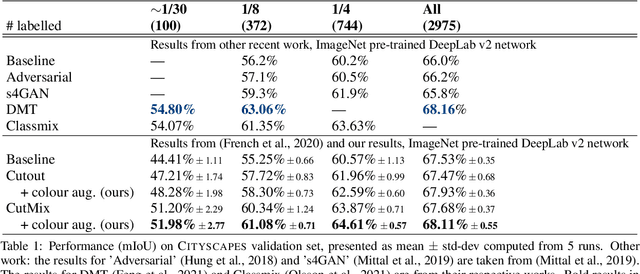


Abstract:Consistency regularization describes a class of approaches that have yielded state-of-the-art results for semi-supervised classification. While semi-supervised semantic segmentation proved to be more challenging, a number of successful approaches have been recently proposed. Recent work explored the challenges involved in using consistency regularization for segmentation problems. In their self-supervised work Chen et al. found that colour augmentation prevents a classification network from using image colour statistics as a short-cut for self-supervised learning via instance discrimination. Drawing inspiration from this we find that a similar problem impedes semi-supervised semantic segmentation and offer colour augmentation as a solution, improving semi-supervised semantic segmentation performance on challenging photographic imagery.
Improving Automated Sonar Video Analysis to Notify About Jellyfish Blooms
Mar 06, 2021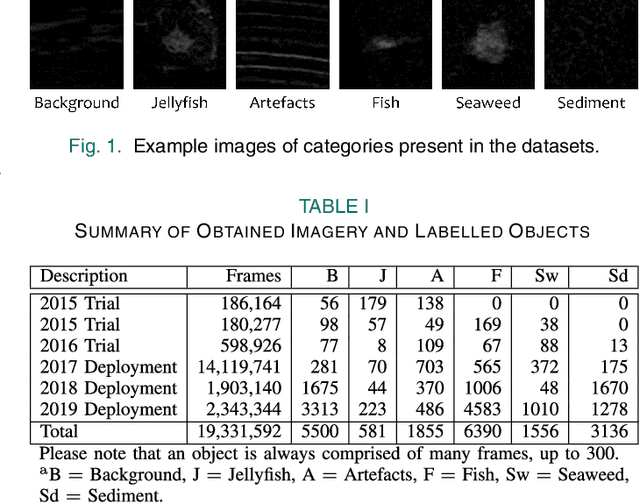
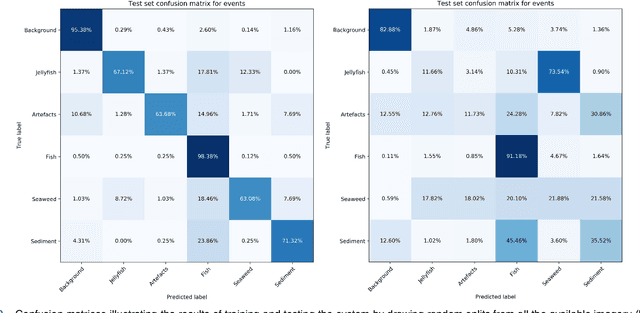
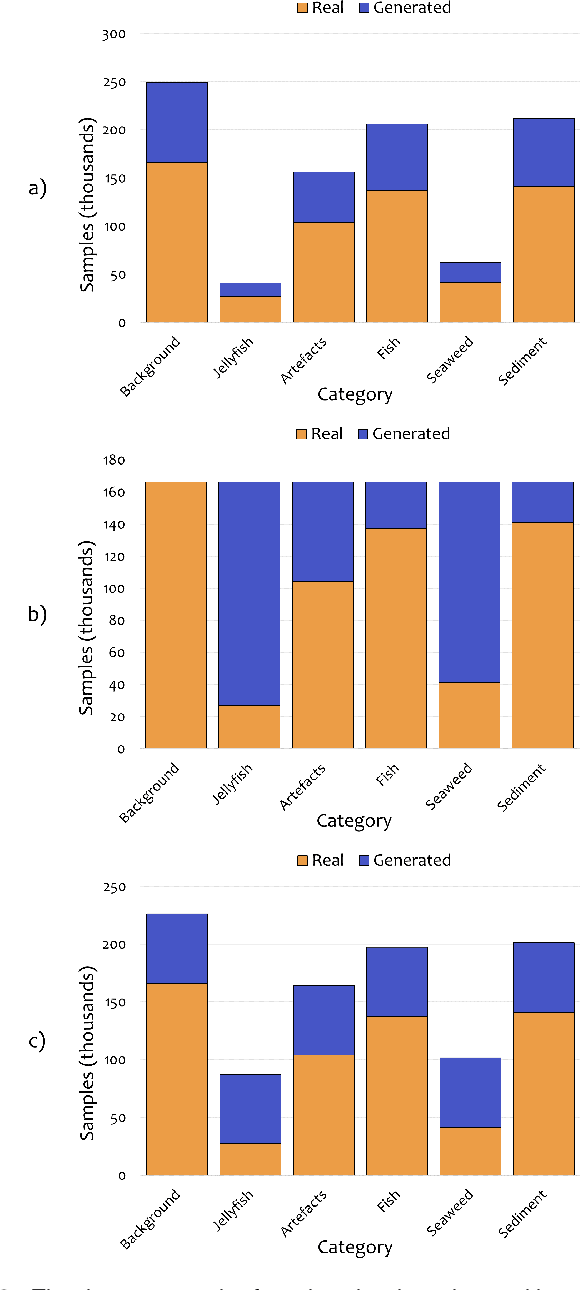
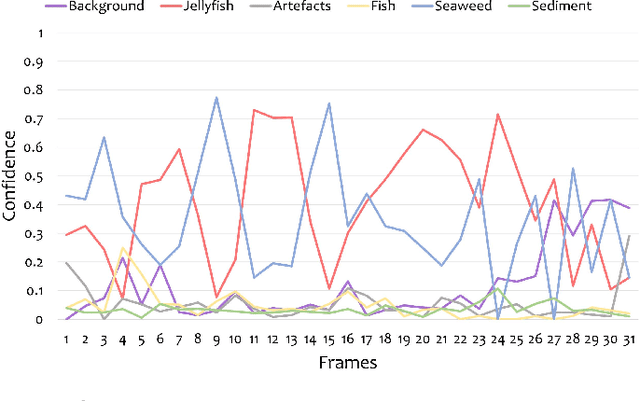
Abstract:Human enterprise often suffers from direct negative effects caused by jellyfish blooms. The investigation of a prior jellyfish monitoring system showed that it was unable to reliably perform in a cross validation setting, i.e. in new underwater environments. In this paper, a number of enhancements are proposed to the part of the system that is responsible for object classification. First, the training set is augmented by adding synthetic data, making the deep learning classifier able to generalise better. Then, the framework is enhanced by employing a new second stage model, which analyzes the outputs of the first network to make the final prediction. Finally, weighted loss and confidence threshold are added to balance out true and false positives. With all the upgrades in place, the system can correctly classify 30.16% (comparing to the initial 11.52%) of all spotted jellyfish, keep the amount of false positives as low as 0.91% (comparing to the initial 2.26%) and operate in real-time within the computational constraints of an autonomous embedded platform.
Virtual Adversarial Training in Feature Space to Improve Unsupervised Video Domain Adaptation
Aug 19, 2020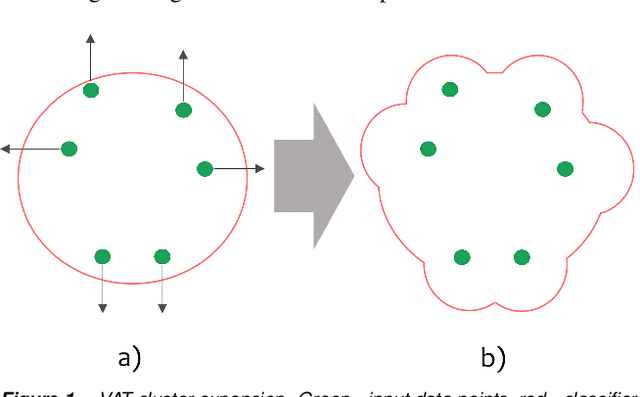

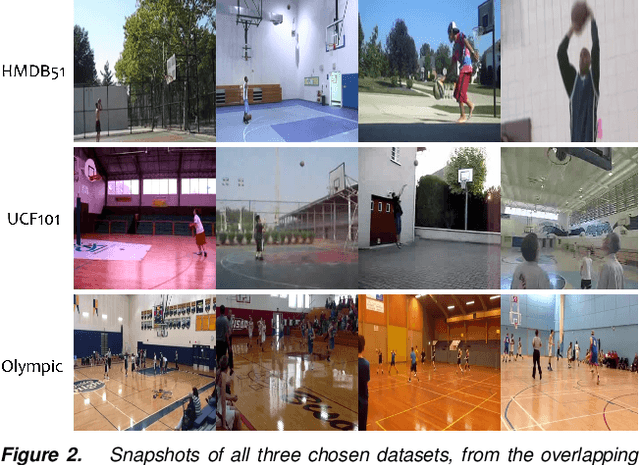

Abstract:Virtual Adversarial Training has recently seen a lot of success in semi-supervised learning, as well as unsupervised Domain Adaptation. However, so far it has been used on input samples in the pixel space, whereas we propose to apply it directly to feature vectors. We also discuss the unstable behaviour of entropy minimization and Decision-Boundary Iterative Refinement Training With a Teacher in Domain Adaptation, and suggest substitutes that achieve similar behaviour. By adding the aforementioned techniques to the state of the art model TA$^3$N, we either maintain competitive results or outperform prior art in multiple unsupervised video Domain Adaptation tasks
Using Deep Learning to Count Albatrosses from Space
Jul 03, 2019



Abstract:In this paper we test the use of a deep learning approach to automatically count Wandering Albatrosses in Very High Resolution (VHR) satellite imagery. We use a dataset of manually labelled imagery provided by the British Antarctic Survey to train and develop our methods. We employ a U-Net architecture, designed for image segmentation, to simultaneously classify and localise potential albatrosses. We aid training with the use of the Focal Loss criterion, to deal with extreme class imbalance in the dataset. Initial results achieve peak precision and recall values of approximately 80%. Finally we assess the model's performance in relation to inter-observer variation, by comparing errors against an image labelled by multiple observers. We conclude model accuracy falls within the range of human counters. We hope that the methods will streamline the analysis of VHR satellite images, enabling more frequent monitoring of a species which is of high conservation concern.
Consistency regularization and CutMix for semi-supervised semantic segmentation
Jun 05, 2019



Abstract:Consistency regularization describes a class of approaches that have yielded ground breaking results in semi-supervised classification problems. Prior work has established the cluster assumption -- under which the data distribution consists of uniform class clusters of samples separated by low density regions -- as key to its success. We analyse the problem of semantic segmentation and find that the data distribution does not exhibit low density regions separating classes and offer this as an explanation for why semi-supervised segmentation is a challenging problem. We adapt the recently proposed CutMix regularizer for semantic segmentation and find that it is able to overcome this obstacle, leading to a successful application of consistency regularization to semi-supervised semantic segmentation.
Spherical sampling methods for the calculation of metamer mismatch volumes
Jan 23, 2019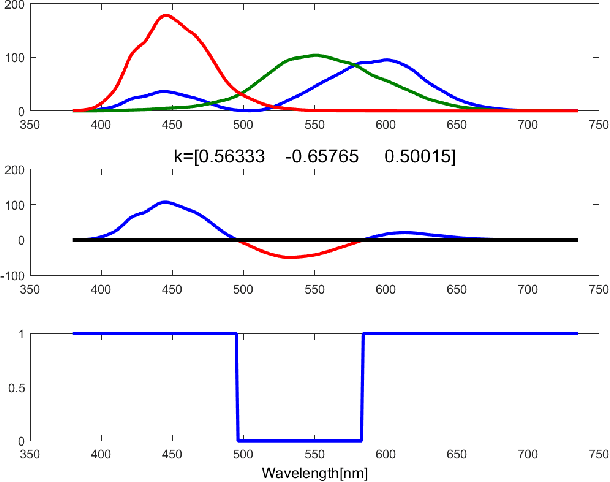
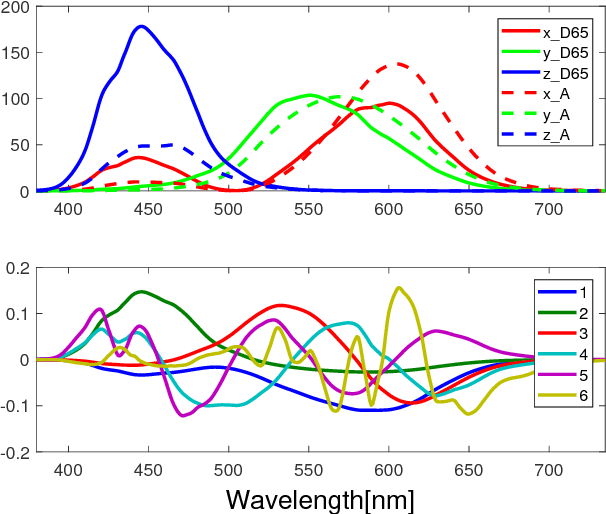
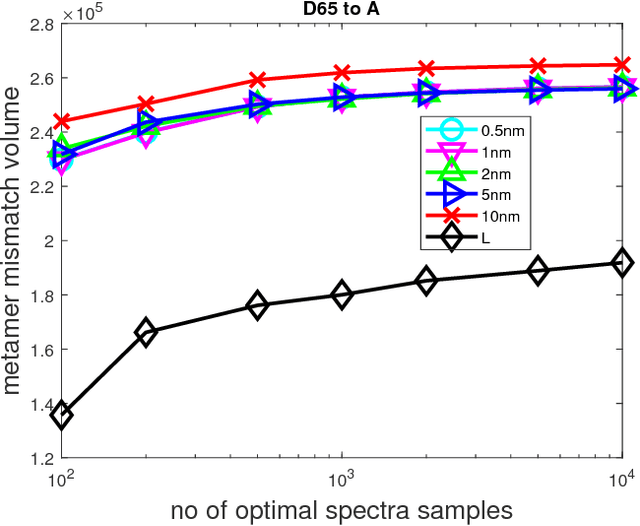
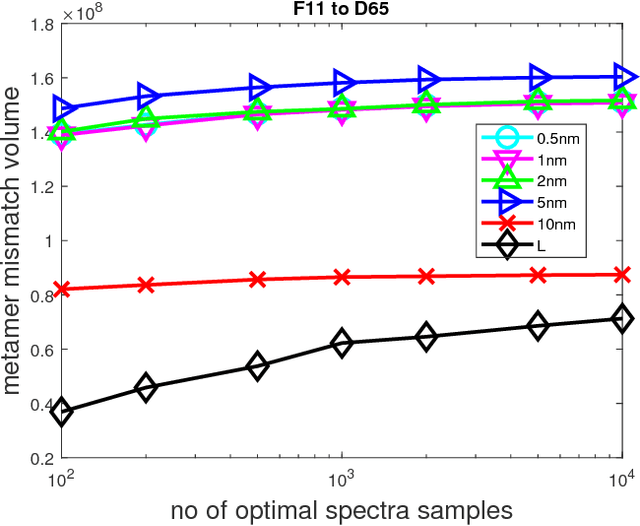
Abstract:In this paper, we propose two methods of calculating theoretically maximal metamer mismatch volumes. Unlike prior art techniques, our methods do not make any assumptions on the shape of spectra on the boundary of the mismatch volumes. Both methods utilize a spherical sampling approach, but they calculate mismatch volumes in two different ways. The first method uses a linear programming optimization, while the second is a computational geometry approach based on half-space intersection. We show that under certain conditions the theoretically maximal metamer mismatch volume is significantly larger than the one approximated using a prior art method.
* One print or electronic copy may be made for personal use only. Systematic reproduction and distribution, duplication of any material in this paper for a fee or for commercial purposes, or modifications of this paper are prohibited. Optical Society of America
Self-ensembling for visual domain adaptation
Sep 23, 2018



Abstract:This paper explores the use of self-ensembling for visual domain adaptation problems. Our technique is derived from the mean teacher variant (Tarvainen et al., 2017) of temporal ensembling (Laine et al;, 2017), a technique that achieved state of the art results in the area of semi-supervised learning. We introduce a number of modifications to their approach for challenging domain adaptation scenarios and evaluate its effectiveness. Our approach achieves state of the art results in a variety of benchmarks, including our winning entry in the VISDA-2017 visual domain adaptation challenge. In small image benchmarks, our algorithm not only outperforms prior art, but can also achieve accuracy that is close to that of a classifier trained in a supervised fashion.
 Add to Chrome
Add to Chrome Add to Firefox
Add to Firefox Add to Edge
Add to Edge